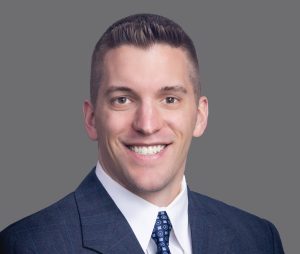 Many people may generally know what an orthopedic surgeon is and does. An orthopedic surgeon is a physician who deals with musculoskeletal problems and can perform surgery to address those problems, if necessary. But what does it mean to be subspecialty trained? More specifically, what does it mean to be a sports medicine trained orthopedic surgeon?
Many people may generally know what an orthopedic surgeon is and does. An orthopedic surgeon is a physician who deals with musculoskeletal problems and can perform surgery to address those problems, if necessary. But what does it mean to be subspecialty trained? More specifically, what does it mean to be a sports medicine trained orthopedic surgeon?
Sports medicine is a subspecialty of orthopedic surgery about which many people may have heard, but few people understand the training background of a sports medicine surgeon or the type of expertise they can provide. A sports medicine surgeon goes through a typical five-year orthopedic surgery training program, gaining exposure to all of the procedures that form the foundation of orthopedic surgery: trauma surgery and fixing broken bones, joint replacement, arthroscopic joint surgery and more. A fellowship trained surgeon then chooses to do an additional, highly focused period of training in one of the so-called “subspecialties” of orthopedics. Sports medicine is one of these subspecialties.
The sports medicine subspecialty fellowship most often consists of two primary components: working closely with a high-level athletic team (or teams) and developing additional proficiency in surgical procedures commonly performed to treat sports-related injuries. Mostly, this surgical experience consists of minimally-invasive arthroscopic surgery. With arthroscopic techniques, sports medicine trained surgeons are able to treat a wide range of joint and soft tissue complaints. The shoulder, elbow, hip, knee and ankle joints are all often within a sports medicine surgeon’s scope of practice. Common musculoskeletal pathologies that sports medicine surgeons manage are rotator cuff tears, shoulder labral injuries, shoulder dislocations, biceps injuries, hip impingement, hip labral tears, knee ligament injuries, meniscus tears, patella (kneecap) dislocations, cartilage injuries inside joints, and many tendon or ligament tears. Because surgical management is not always necessary for these problems, their training allows sports medicine surgeons to discern when nonoperative treatment is appropriate and, if necessary, how, when and what surgical intervention is appropriate.
While arthroscopic surgery is the true area of expertise for a sports medicine surgeon, they are also highly skilled in open surgical techniques. With their extensive general orthopedic training background through the five years of orthopedic residency, many sports medicine surgeons will choose to perform joint replacements and trauma surgery (fixing broken bones). These surgeries, while becoming less invasive over time, are still currently performed using a traditional open incision. Even the soft tissue and joint-related injuries described above cannot always be performed with minimally invasive techniques. A sports medicine trained surgeon will be able to determine whether a specific surgery can be done arthroscopically or is more effectively performed through a traditional open incision.
With this information in mind, “sports medicine” is a bit of a misnomer. Yes, an orthopedic sports medicine surgeon can treat athletes to help return them to sports participation. However, they are also able to treat the same injuries in the weekend warrior, or even perform elective surgeries for more chronic conditions like an arthritic joint or an old tendon injury. Thus, sports medicine is really a subspecialty of orthopedic surgery broad applications; nonoperative techniques, arthroscopic surgery and open surgery are all used to ultimately help increase patients’ function, decrease their pain and return them to a higher level of physical ability. FBN
By Todd Ludwig, M.D.
Todd Ludwig, M.D., is a sports medicine surgeon with Flagstaff Bone and Joint. Dr. Ludwig is welcoming patients to his Flagstaff and Cottonwood offices. For additional information or to schedule an appointment, visit flagstaffboneandjoint.com or call 928-773-2280.





